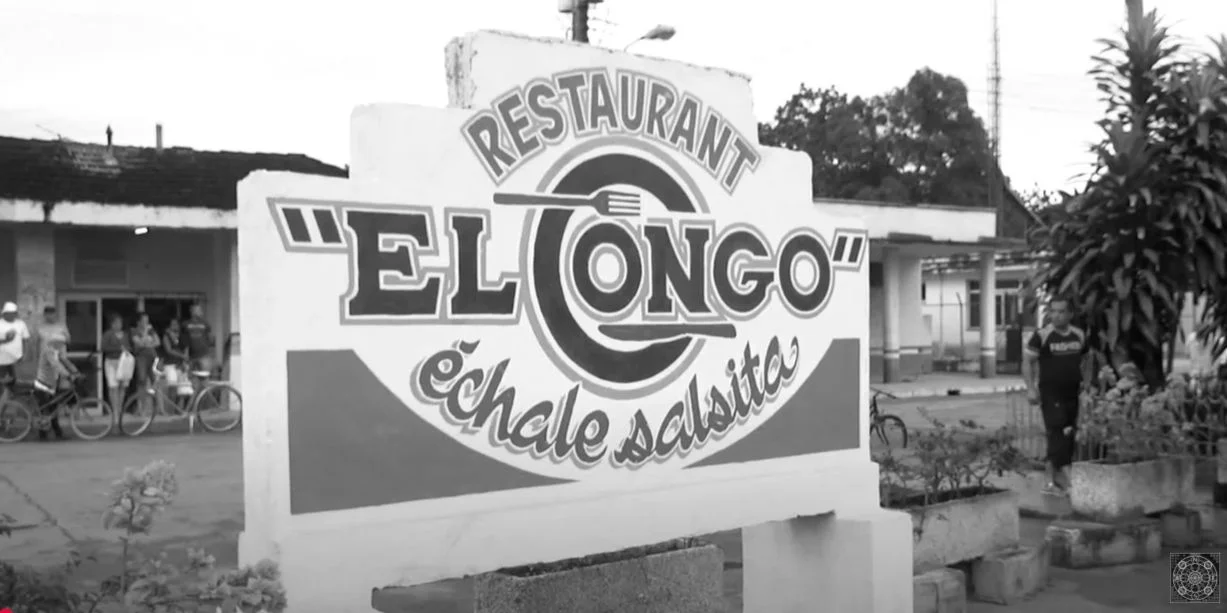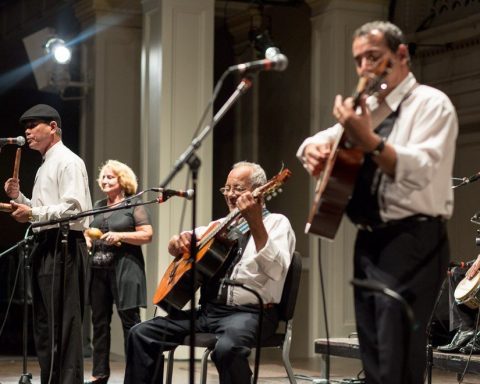SANTA CLARA, Cuba. – If there is one condition that the Cuban inherited from that “ajiaco” of cultures that made up the national idiosyncrasy, it is the taste for good food, an irrefutable fact reflected in great classics of island music that are still sung and danced on great stages around the world. There are plenty of examples of songs whose titles talk about Creole gastronomy or mention cooking recipes adapted to Caribbean customs in their chorus.
One of the most popular works of the Cuban songbook is without a doubt Add sauce, by the author of the habanero Ignacio Piñeiro Martínezthe famous composer and instrumentalist, founder of the National Septet and creator of the Asturian anthem. The anecdote of how the first written proclamation in the world emerged, at the beginning of the 1930s, is related precisely to a gastronomic recipe inherited from Spain.
Add sauce It begins by narrating Piñeiro’s visit to the town of Catalina de Güines, where, according to the lyrics, “the unthinkable was found, the voice of the one who proclaimed like this…”. And in this small town, the sausages made by Guillermo Armenteros, who everyone knew as El Congo, had gained fame, highly requested by those attending the El Cañón dance hall, where Piñeiro used to go regularly with his septet.
Armenteros’ venture began with a small cart with which he toured the town hawking his appetizing merchandise at the price of 5, 10 and 20 cents depending on whether it included bread or not, although individual units were sold by dozens. Some time later he was able to afford a modest kiosk on the side of the road that researcher Lino Betancourt describes as a wooden stand, without seats, where he grilled sausages on top of a zinc can with a lighter underneath. He offered them to the consumer’s taste: with or without the famous hot sauce.
It is said that the sausage dough consisted of a mixture of pork, beef and chicken, to which other seasonings were added such as garlic, salt or nutmeg and a mysterious ingredient that, according to what they say, was a secret that El Congo “ was taken to the grave.” Once cooked in their pork intestines, they were seasoned with the famous “salsita”. Impressed by the unusual demand for El Congo sausages and their curious way of preaching, Piñeiro composed the unique chorus of a sit-in. Until today, it is perhaps his best known and covered song internationally.
Both the musical theme and the acceptance of those cold cuts among travelers who traveled along the Central Highway brought the El Congo Armenteros family enough profits to later open a restaurant in the late 1950s. They say that Benny More He was a regular at that cafeteria long before he gained fame: “I had to travel by bottle from Santa Isabel de las Lajas to Havana. His economy was precarious and sometimes he would arrive at the kiosk starving late at night and my uncle would feed him,” counted a nephew of Armenteros.
About Add sauce, researcher Rafael Lam maintains in his book History of famous Cuban songs which became a commercial son despite not having been composed on request, “of an ingenious poetry, in which the creator shows the Creole, erotic, highly suggestive mischief.”
Olga’s tamales
Although sweet corn tamales do not have their origin on the Island, Cubans have adopted them as part of their popular cuisine with typical adaptations such as the incorporation of pork empellas and their Guajira version of the so-called “tayuyo”. Precisely, another of the best-known songs that evoke cooking is Olga’s tamalescreation of the flutist and conductor José Antonio Fajardo, who was inspired by a real person to compose the famous cha-chachá.
Olga Moré Jiménez from Cienfuegos was the town crier who became Fajardo’s muse, a Cuban dedicated to the making and sale of tamales, especially in Havana’s Prado and Neptuno streets and in dance and recreational societies at the end of the 1940s. . In an interview with the official magazine The Jiribilla Shortly before dying, the tamalera woman would confess that, although she was often made fun of, she was forced to make a living after being widowed, with three hungry children and a sick mother to care for.
According to what he said in that same conversation, he met the author of the song, who was director of the Fajardo y sus Estrellas Orchestra, in a download room that he frequented when the sales of his tamales were already having some social recognition in the capital area. From that meeting arose the famous “Pican, no pican, los tamales that Olga sells”, popularized in the 50s by the Aragón Orchestra and later internationalized by the Venezuelan sonero Oscar D’Leon.
It is said that Olga preferred to prepare her tamales alone and that she tied them up at night so as not to waste time in the morning. Furthermore, the original recipe was never revealed to anyonenot even close family members.
Yucca, protagonist in Cuban music
Among the iconic themes dedicated to gastronomy, there has been no shortage of double meanings of certain expressions that have gone down in the history of music as a sign of the Cuban’s ease in choteo. It is no coincidence that cassava, a tuber so consumed on the Island, is the repetitive subject of a few songs that actually flirt with picaresque metaphors.
“Okra that slides for dry yuca” is a chorus well known to most Cubans who love or not the musical tradition. Although its authorship is attributed to the Guantanamo pianist, composer and arranger Luis Lili Martínez Griñán, some researchers refer which was actually written by the Cuban musician Luis Griñán Camacho.
Another topic that food mentions is How do I bring the yucaby Arsenio Rodríguez, composed in 1942, which is popularly known as “Tell Catalina to buy a guayo.” The song “El Ciego Maravilloso” was most widely spread in its dance form in the 1980s by the Irakere orchestra.
Faustino Oramas, El Guayabero, “king of picaresque” in Cuban music also mentions food in the song Casimiro’s yucca. The lyrics, with an obvious double meaning, tell the story of a peasant who managed to grow a yucca that measured a kilometer long, causing excitement among visitors who came to see the prodigy from the east of the country: “I don’t admire the size ∕ because I I have a stove ∕ that softens Casimiro’s cassava with a heat ∕.”
With Pedrito Calvo and Los Van Van, yuca once again takes center stage in The black man is cookingfrom 1999. Although the text itself does not mention any recipe based on the tuber, it tells the adventures of a divorced man who is constantly requested by his neighbors who insistently knock on his door to try his food.
The truth is that for a long time now Cubans have not been able to afford sausage or cod with bread, and on rare occasions tamales and yucca. It remains, if anything, to settle from time to time with the broth (without substance) of Kike and Marina.


















